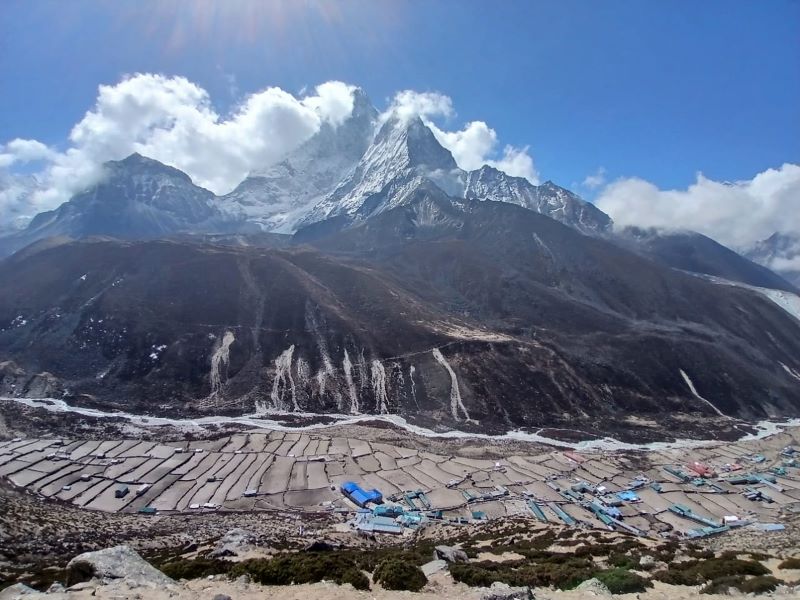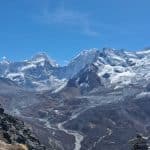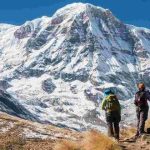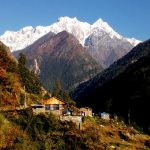Dingboche (4410 Meter)

Dingboche is a high altitude village in eastern Nepal’s Khumbu district lying at around 4,410 meters (14,470 feet) above sea level. The village is in the Khumbu Region, surrounded by gigantic mountains and approachable via the classic Everest Base Camp trekking route. Lying beneath the spectacular Ama Dablam and near the iconic Island Peak, Dingboche is a key stopover for trekkers and mountaineers journeying further into the Everest Himalayas.
This village is very important as a place of acclimatization for climbers trekking up to Everest Base Camp Trek and other adventures in the Everest region such as climbing Lobuche, Island Peak and more. Because it is at a higher elevation, spending nights here helps the body acclimatize to thin air and prepares you to ascend further up. The village has a range of teahouses, lodges and bakeries to cater to the flow of visitors. The stunning views of the Himalayas that encircle the village and the serene ambiance make it the perfect place to unwind and acclimatize before the high-altitude climbs.
Dingboche offers a couple of trekking trails around it of which the half day trek to Nangkartshang Peak provides you with stunning views of Everest, Makalu, Lhotse and other Himalayan giants. The trekkers usually spend their leisure day trekking nearby, taking in the view or just resting in one of the cozy lodges. Dingboche’s dry, windswept landscape, stone-lined fields and colorful prayer flags give it a unique and pretty charm. To most, Dingboche is more than a stopping point, it is an adventure worth remembering as part of the grander Himalayan trek.
What to Expect in the Village?
- Simple lodges with shared toilets, limited hot water and cozy dining rooms.
- Dal bhat, soups, noodles, pancakes and apple pie are typical fare.
- Terraced fields surrounded by stone walls for growing barley and potatoes in warmer weather.
- Surrounded by dramatic Himalayan giants like Ama Dablam, Lhotse and Island Peak.
- Dingboche is more spread out than most other villages, offering open skies and sweeping views.
- Wi-Fi is available for a fee and equipment charging stations are found at some spots.
- General trekking gear, snacks and essentials are available in market shops.
- Ideal setting for rest and acclimatization.
- Day treks to Nangkartshang Peak are common to acclimate and enjoy great views.
Local Life and Culture in Dingboche
Dingboche is deeply rooted in Sherpa culture. Sherpas are the dominant inhabitants who are renowned for their mountaineering skills and kind hospitality. Farming, yak grazing and trekking tourism are their means of earning a living. Due to the remoteness and harsh, high altitude climatic conditions, life is simple and tough. People rely on what the land provides, like potatoes, barley and yak products which form the backbone of their diet and daily life. Yaks are also employed as a transport medium and source of milk.
Buddhism is deeply rooted in the lives of the inhabitants. As you stroll through Dingboche, you will notice prayer flags flapping in the breeze, stone mani walls bearing sacred mantras and prayer wheels placed at strategic points about the village. These are indicative of spiritual worship and also a reminder of the respectful manner of approaching the mountains by Sherpas where they dwell.
The people of Dingboche also have a close knit community. Most of the families work together either as cultivators or in managing teahouses for trekkers. During festival times like Losar (Tibetan New Year), the village overflows with rituals, cultural dances and prayer ceremonies. Life here is simple, peaceful and rich in culture, generosity and spirituality giving an insight into life shaped by decades of living with nature and the Himalayas.
Weather and Best Time to Visit
Dingboche has harsh and unpredictable weather since it is high up in the Himalayas. It can get chilly, even during summer and the nights are extremely cold. It snows in October and keeps snowing up until spring. The air is thin and arid and the winds are strong in the open valley on which the village is situated.
The best seasons to go to Dingboche are the pre-monsoon (spring) and post-monsoon (autumn) treks. Spring (March-May) offers relatively stable weather, clear skies and excellent mountain views. There will also be some alpine flowers blooming along the lower trails. Autumn (September to November) brings clear air after the monsoon and offers sharp visibility of the majestic Himalayas. It has mild daytime temperatures allowing for a comfortable trek. Being the high trekking season, teahouses in Dingboche are open and prepared to welcome trekkers at this time.
Winter (December-February) is extreme in cold and snowfall which makes the trek troublesome and trails to Dingboche less accessible whereas the monsoon season (June-August) offers slippery routes and overcast views which can ruin your trekking experience. In order to have the best out of your trip, make arrangements to arrive in Dingboche during the high trekking season.
Our Top Offer
Why booking with us ?
- Fully Locally Owned Company
- Quality Of Service and Competitive price
- Highly Professional Staff
- Flexible and customization trip itinerary
- 100% Customer satisfaction
Need help?
Nepal: 00977-9841273869 whatsapp: 00977-984127386924 hour customer service




